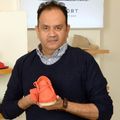Interviews
Shoppers traffic main indicator for gauging retail sales
26 Mar '14
4 min read
Making sense of the numbers
Part of the challenge is in understanding exactly where and how each of these companies is measuring store traffic. The ShopperTrak data, according to the WSJ article, is based on 60,000 malls and large retailers across the country, but in fact, according to ShopperTrak’s own website, the company analyzes data from over 60,000 locations across 90 countries and territories.
How many of these stores are in the US, and which ones were included in the index? It’s also reasonable to know if any particular retail categories were over or under represented. For example, if an index is primarily comprised of specialty apparel retailers, then how representative is it of the entire retail industry?
RetailNext bases its results on 34.6 million shopping trips. The company doesn’t define what a “shopping trip” is; however, it does say that it collects data from 65,000 sensors in retail stores.
It’s not clear how many unique stores are represented by the 34.6 million counts, but it’s a relevant question. For example, if these 34.6 million counts were captured only from large stores that had average daily traffic of, say, 1,000 traffic counts per day during the November-December holiday period, we would conclude that the index is based on only about 600 unique stores.
If, however, the index included only small stores that had averaged only 100 counts per day, the 34.6 million counts would represent about 6,000 unique locations. It’s important to understand how many unique stores are included in an index because the number reflects market coverage – if an index has insufficient coverage or is not based on a statistically significant and representative sample of the market, how valid will the results be?
Euclid is an entirely different story. This company gathers store traffic data from Wi-Fi signals captured from smartphones. The obvious problem here is that not everyone has a smartphone. According to a 2013 survey by Nielsen, 61% of mobile phone subscribers have smartphones – which means 39% don’t. Furthermore, since some of these users may have their Wi-Fi signal turned off, some customers won’t be tracked.
HeadCount Corporation
Popular News
Leave your Comments
Editor’s Pick
































-Ltd..jpg?tr=w-120,h-60,c-at_max,cm-pad_resize,bg-ffffff)





.jpg?tr=w-120,h-60,c-at_max,cm-pad_resize,bg-ffffff)
.jpg?tr=w-120,h-60,c-at_max,cm-pad_resize,bg-ffffff)






